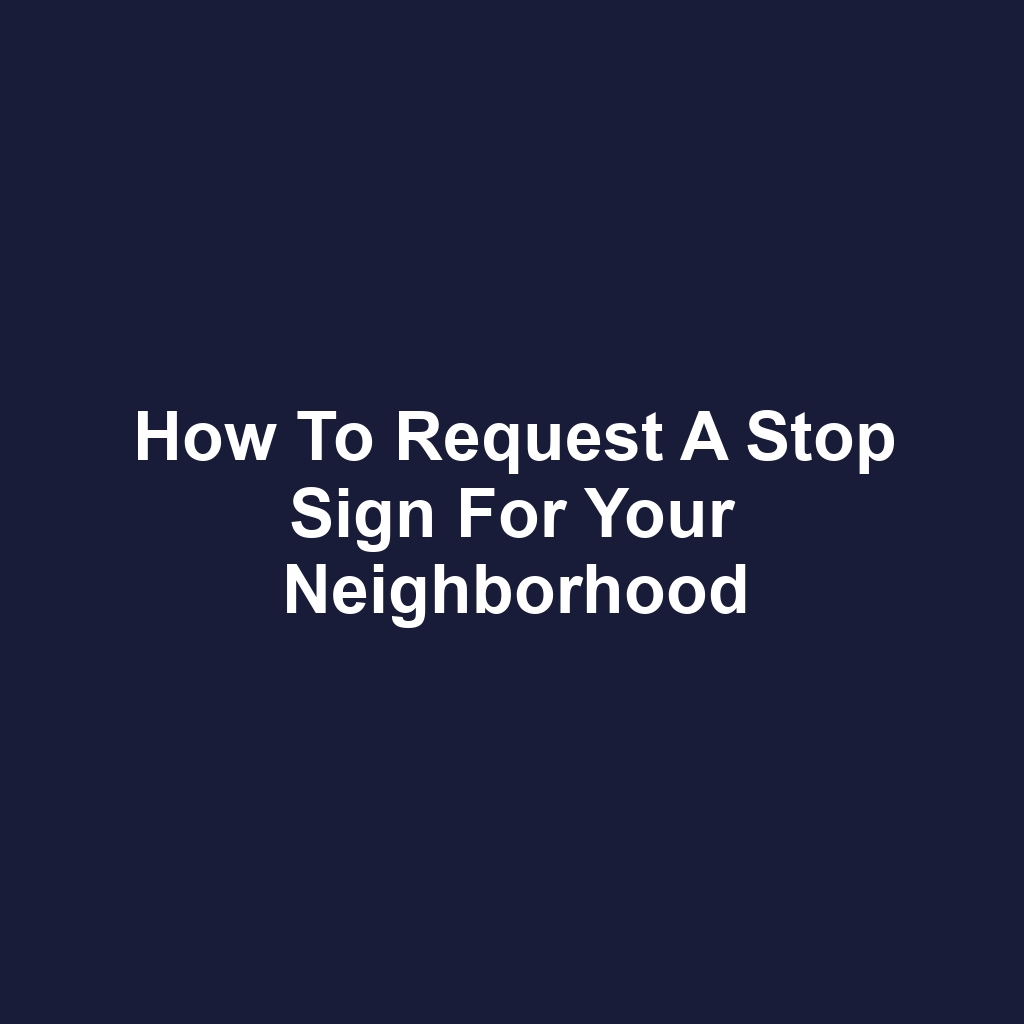If we’ve noticed an increase in traffic or safety concerns in our neighborhood, it might be time to consider requesting a stop sign. We all want to make our streets safer for everyone, and a stop sign could be a simple yet effective solution. Together, we can assess the need for this traffic control measure and gather support from our fellow residents. By understanding local traffic regulations, we can strengthen our case when we submit our request. Let’s take the necessary steps to make our community a safer place for all of us.
Key Takeaways
Evaluate traffic conditions, community concerns, and visibility issues before making a request for a stop sign.
Engage the community to gather support and share personal safety experiences related to traffic.
Research local traffic regulations and understand the petition process for submitting a stop sign request.
Compile necessary data and follow up with local authorities to ensure your petition is acknowledged and addressed.
Assessing the Need for a Stop Sign
We’ve noticed an increase in traffic and believe it’s time to assess the need for a stop sign in our neighborhood. We can all see that more cars are passing through, especially during peak hours. It’s become concerning, especially with children playing outside. We should gather data on the number of vehicles and their speeds. We’ll also want to consider the visibility of the intersection and any potential hazards. Our community meetings can serve as a platform to discuss these observations. It’s important that we all share our experiences and concerns. We might even want to survey other residents for their input. By working together, we can make a strong case for the stop sign.
Gathering Community Support
Gathering community support is essential for making our request for a stop sign more impactful. We can start by talking to our neighbors about the safety concerns we share. It’s important we gather signatures to show that many of us feel strongly about this issue. Hosting a community meeting would give everyone a chance to voice their opinions. We should create flyers to spread the word and inform others about the meeting. Engaging with local social media groups can also help us reach more residents. We can share our personal stories and experiences related to traffic safety. Our collective voice will carry more weight when we present our case to the local authorities. Together, we can make our neighborhood a safer place for everyone.
Researching Local Traffic Regulations
Researching local traffic regulations is crucial for understanding the requirements for requesting a stop sign in our neighborhood. We’ve gotta familiarize ourselves with the specific rules set by our local government. It helps us know what data we need to gather and present in our request. We should check if there are existing guidelines on traffic control devices. Local ordinances might specify the criteria for stop sign placement. We can often find this information on our city or county’s website. It’s important that we understand any petitions or forms we might need to fill out. We’re also gonna want to learn about the process for submitting our request. By doing this, we’ll be better prepared to advocate for the safety of our community.
Submitting Your Request
Submitting our request for a stop sign requires us to provide specific details and supporting information to the local authorities. We’ll need to gather data on traffic patterns and accident reports in our area. It’s important we highlight the reasons why a stop sign is necessary for safety. We should also include the location where we believe the sign should be placed. Additionally, we’ll want to mention any nearby schools, parks, or community centers that might be affected. Our request must be clear and concise to ensure it’s taken seriously. We’ll submit all this information in a formal letter or online application. After sending our request, we can’t forget to keep track of its status. Following up on our petition is crucial to ensure our voices are heard.
Following Up on Your Petition
Following up on our petition is essential to ensure our request for a stop sign isn’t overlooked. We’ve gathered support from our neighbors, and now it’s time to keep that momentum going. It’s crucial we reach out to the local authorities to confirm they’ve received our request. We should set a timeline for our follow-up, so we’re not waiting indefinitely.
If we don’t hear back in a couple of weeks, we’ll need to send a polite reminder. We can also ask our neighbors to join us in this effort, reinforcing the importance of our request. Sharing updates on social media might help maintain interest in our cause. Documenting any changes in traffic patterns or safety concerns will strengthen our argument. Together, we’ll make sure our voices are heard and that our community remains safe.
Conclusion
In seeking a stop sign for our neighborhood, we’ve taken important steps to address safety concerns and enhance traffic management. By gathering community support and collecting vital data, we’re making our voices heard and advocating for a safer environment. Understanding local regulations has empowered us to navigate the process effectively. We must remain proactive in following up on our request to ensure our concerns are taken seriously. Together, we can create a safer space for everyone in our community.
If you’re interested in enhancing your automotive knowledge, I highly recommend visiting this informative page on understanding the 4L60E shift linkage adjustment. It provides valuable insights that can help you troubleshoot and optimize your vehicle’s performance. Check it out here: shift linkage on 4l60e.
